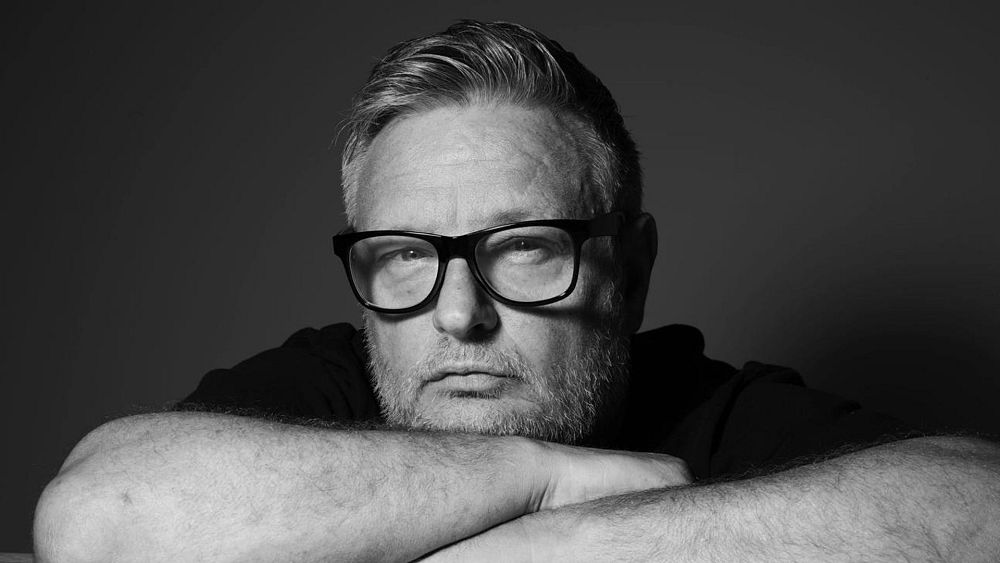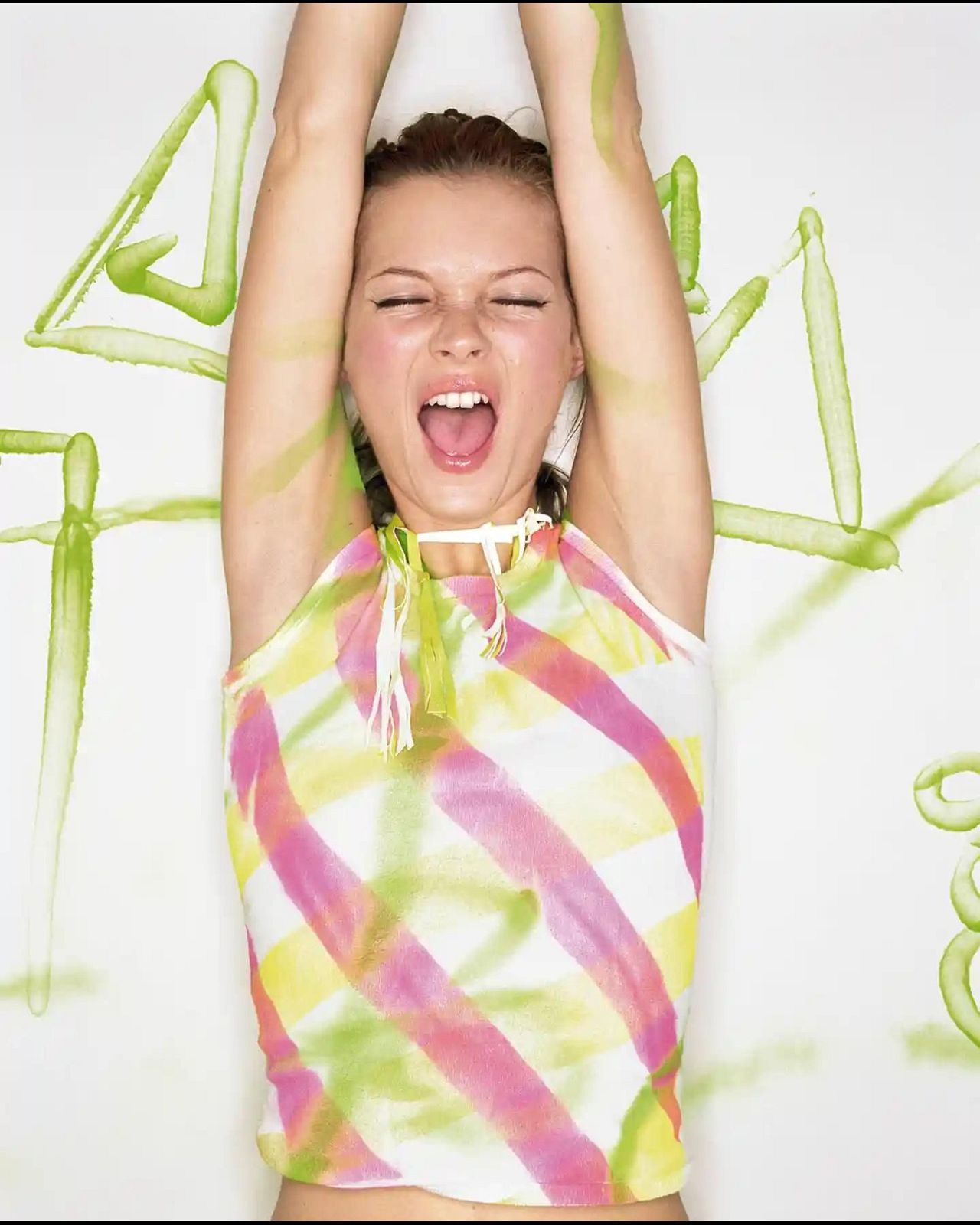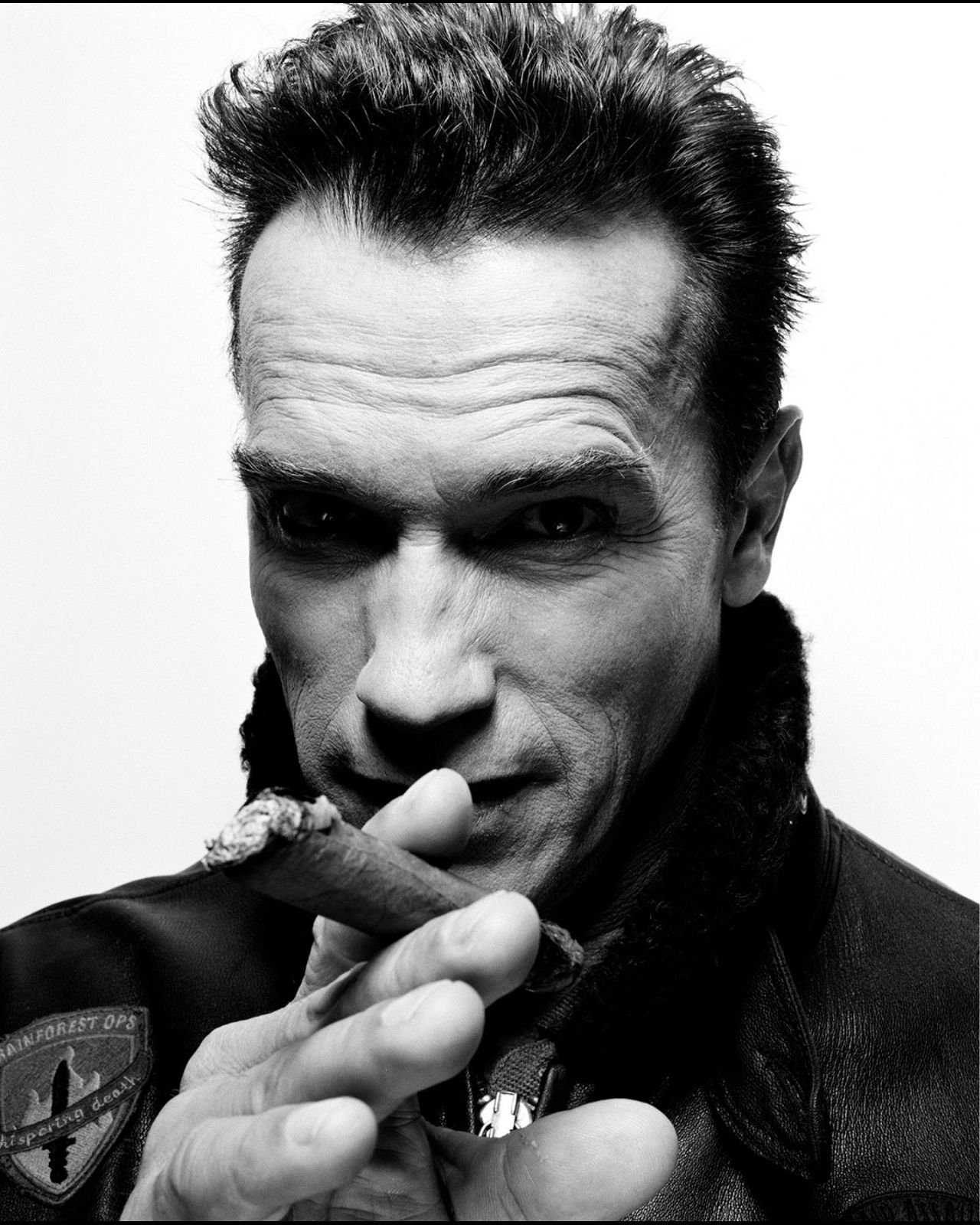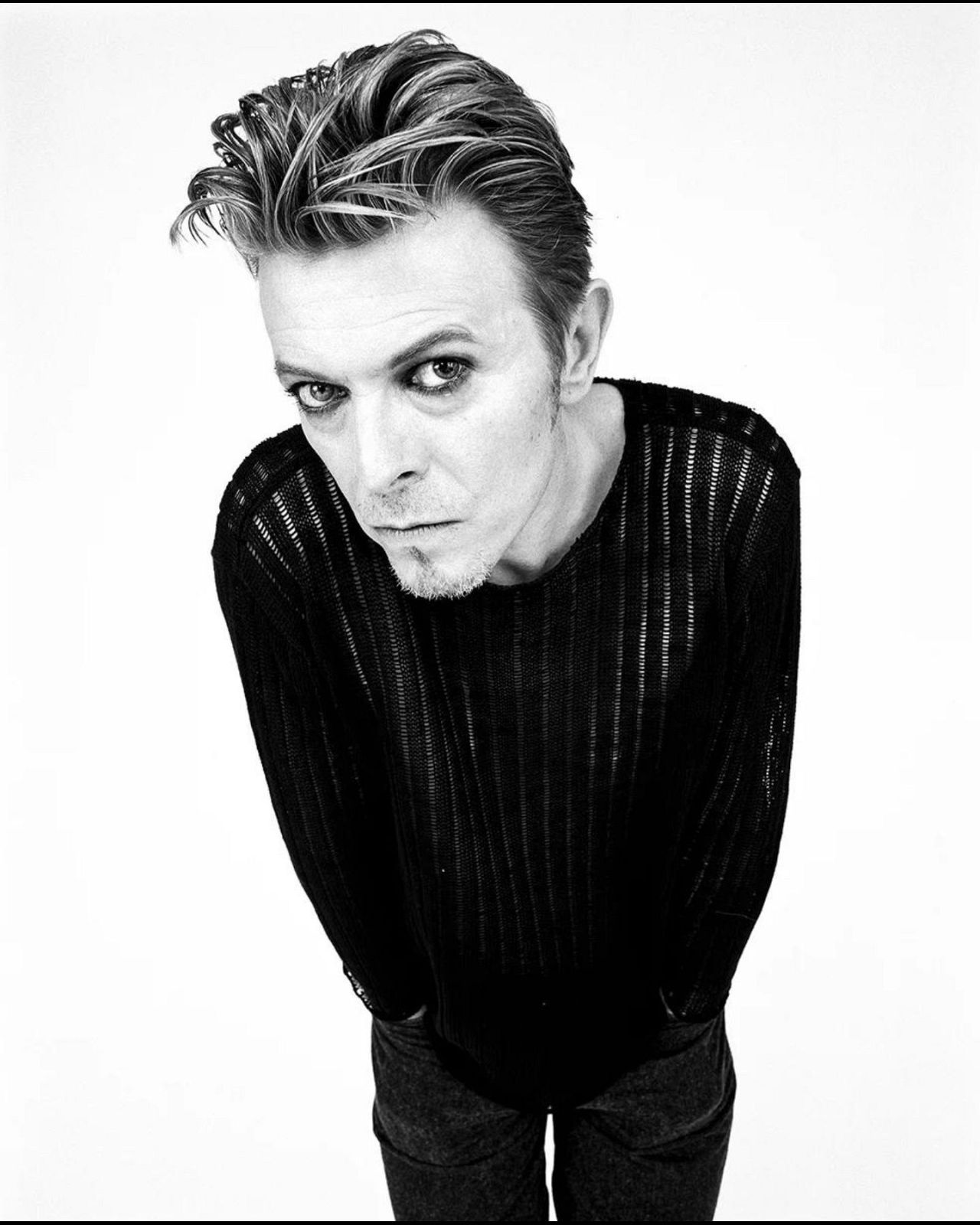
Rankin, the renowned British fashion-portrait photographer, has captured the essence of countless iconic figures, from David Bowie, Mick Jagger and Madonna, to Queen Elizabeth II and Kate Moss.
With a career spanning over three decades, he has cemented his place as one of the most influential photographers of our time.
But what drives Rankin to keep pushing the boundaries of his art?
And what does it take to be a brilliant portrait photographer?
Euronews Culture spoke with Rankin at The Other Art Fair, a leading art fair which took place from 9-12 March at The Truman Brewery in London. With 150 artists showcasing their extraordinary work to the public, the fair offered a variety of exciting activities, including performances, live portrait painting, a tattoo booth and hundreds of affordable artworks selling from £100.
Rankin added to the event’s allure with his RankinLIVE project, enabling visitors to have their pictures taken by the legendary photographer.
In this exclusive interview, we delve into Rankin’s creative process, his journey to becoming one of the most sought-after photographers of our time, and his views on the changing landscape of the art form.
We’re here at The Other Art Fair in Shoreditch, London, where you’re taking photographs with strangers. How do you go about establishing a connection with your subjects, and what techniques do you use to capture their essence?
Well, every person is different. So the way that you establish any rapport depends on the person in front of you. Everyone’s unique. When I’m doing something like this, RankinLive, at The Other Art Fair, I’m in a position where I’m probably not photographing the celebrity. So I don’t know much about them. And I’ve really got to trust my instinct on what they’re like when they come in.
But one of the things that’s very easy to do when you’re taking a photograph is instead of talking about the camera, you know looking at the camera, instead talk about looking through the camera. As you look through the camera, it sort of breaks down this idea of it being a performative thing and it makes it much more intimate.
So if you try and imagine as a subject to look at the person that’s looking at the photograph, it creates more of an individual experience.

Your work includes an incredible range of subjects, from rockstars to royalty. Is there a particular subject or shoot that stands out to you as being particularly memorable?
My most memorable shoot is with the Queen by a long way, not only because she was the most famous person in the world at that time and the most famous face, because she really grew up when photography was growing up, but also because the whole idea of shooting her for me was about trying to create an image that was more humorous and had her honestly smiling.
Rankin
And I only had 5 minutes to photograph her, so it was a very intense shoot just because of the time period. But what was really interesting about her is that she was very professional. She was really somebody that knew and understood photography. Her brother-in-law had been a photographer, a very, very talented photographer. So she had a real understanding of what she was doing with me and the only weird thing was I really thought I was getting brilliant photographs because she was that type of person that she made you feel very special in that moment. The photographs that I got that were good were the ones of her smiling, which is what I went to try and do.
Is there anyone on your ‘bucket list’ that you have yet to photograph?
I tend to not have a ‘bucket list’ of people I want to photograph because I don’t want to be a hunter of photos. I want the photographs to work organically and come together through collaboration. So I’m always looking for people that want to be photographed by me more than me wanting to photograph them and then the relationship is slightly different.
But of course there are people that I’ve got a little bit of a crush on, like I’ve got a crush on Russell Crowe, 100%. I’ve got a crush on Obama. So if I was given the opportunity to photograph them tomorrow, I would probably go wherever in the world to photograph them.

Do you ever get nervous before a big shoot?
Honestly, I don’t get nervous any more. I used to get nervous. I think I get, I’m anxious that the shoot is going to go well, but I’m not nervous of the fame or the personality, because I think that I’ve just been in so many situations where things haven’t gone right but I know enough now to know how to deal with it.
Rankin
But I think you should always be considerate of who you’re photographing. And as a human being what you can’t do is and assume that you understand or know them because of things you’ve read or seen because lots of people are very different. And also I’ve got a real rule which is, you know, people are going to be photographed by me for maybe an hour, maybe 2 hours maximum really on any one day. And you’ve got no idea what’s going on in their personal life. So you should never judge them by what’s going on because they might have had an accident, their family pet might have passed away, they might split with their partner. So I don’t judge them. And I think if you go into the shoot not judging someone, you get a really good positive result most of the time.
AI technology has revolutionised the way we approach photography, but it has also sparked controversy around issues of authenticity and creativity. As a leading figure in the industry, what are your thoughts on the role of AI in photography, and how do you see it affecting the future of the craft?
I think that AI is going to be a massive business for lots of intellectual property lawyers, because I think it’s going to be very complicated. I’ve played around with it and I find it fascinating what I especially AI image creation can do. I would imagine within the next 12 months I will definitely do some form of AI project, but I think it will probably be more Rankin versus the machine as opposed to Rankin and the machine.

You’ve had a long and prolific career. How has your perspective on photography evolved over the years, and what continues to drive your passion for the craft?
I think what’s interesting about my relationship with photography was I started taking photographs because I was painfully shy, but I knew that I was really good in a one on one situation and I wanted to be a documentary photographer when I first started. So my dad actually said, ‘Do what you’re good at because you’re always going to be the best if you do what you’re good at.’ And I was always good at taking portraits and being in a one on one situation.
Rankin
So what’s happened with photography over the years that’s really interesting is that everybody’s a photographer now. So photography has been democratised by the camera phone, essentially. And my relationship with photography has probably become more and more serious, and more and more considered the longer I’ve been doing it. It’s literally like a digital revolution has happened and that has meant the power of photography is in the hands of everybody, which is quite dangerous, but it’s also very exciting.
The one thing about photography that I love is that I just keep learning more and more and more. And now everyone’s a photographer essentially, my relationship has become more than just about taking photographs. It’s about talking about photography, trying to get people to understand what it’s about, what it’s about, what it means, the power of photography. I’ve seen photographs that I’ve taken absolutely change someone’s life. It’s taken them from being not very confident, very kind of self-critical to, within one photograph, being super, super confident, kind of enable them to to take what the problem was and turn it on its head.
So for me, the whole change from, you know, the kind of idea of a kind of authoritarian or a dictator style photographer, to what I became probably in the late nineties, which was a collaborator.
What moment in your career are you the proudest of?
It’s really hard because this is the other thing about taking photographs, is what makes me proud and what actually makes other people proud are very different.
But actually being able to do projects that are very personal to me and to really understand how photography can be impactful for people’s lives. Being a photographer has a kind of time, because it’s a fraction of a second you’re shooting most of the time. So time is always there, it’s on your shoulder, it’s omnipresent as well. You’re you’re supposed to be taking photographs forever and I’ve never forgotten that. Like, I always remember that it’s about creating a memory and that memory then maybe having more power.
So to me, what I’m proud of is being continually learning about the medium that I love and not just kind of staying where I was.
Rankin
When I started, I was painfully shy. So I balanced that out by being really obnoxious and a bit of a show off. But through photography and through understanding photography, it really made me realise that actually the best way to take photographs is to collaborate.
So the bit that I’m the most proud of are the collaborations that I’ve had throughout my career and the people that I’ve seen through, whether it’s me photographing them or being part of the magazines that I’ve started and edited, seeing their careers take off, seeing people kind of find themselves through photography and at the same time still being pretty critical of myself.
It’s a bit like a mirror photography. You can’t help but look at yourself through what you’re making. It’s weird. It’s a weird thing. That was a bit deep, that one.
View this post on Instagram
Fun question — what music are you listening to at the moment?
I’m very into the new, so Loyle Carner is a big influence on me right now. I love what he’s doing.
But I love old music. I love it. I’m very much a culture vulture. I’m always looking for new albums. I’m always hungry. That’s why I called my magazine Hunger because I’m hungry for the new.
But my go-to on a shoot would be the Rolling Stones 100%, because there’s a familiarity and a kind of edginess that the Rolling Stones have that still works on shoots — and they still feel very modern.
As a seasoned pro, what advice would you give to young, aspiring photographers looking to establish themselves in the field?
I always say to young photographers, read about your subject, but also watch and read other stuff as well. You have to have knowledge. Stop scrolling, right? And actually look at books and read them, about the philosophy and the ideology and the culture of photography, because, you know, that’s really, really important. Really understanding the power of photography is super important.
Rankin
Stop doom scrolling. Be bored. Boredom creates amazing work. Don’t imitate. You can imitate when you’re a student, but once you start making your own work, try and find your own voice.
And take lots of photographs. I really believe in the Malcolm Gladwell 10,000 hours. If you do 10,000 hours, you just get better and better and better — and then eventually it’s just an instinctive thing.
In 100 years time, how would you like to be remembered?
In 100 years I’m not even sure if I will be remembered. I used to think that was the most important thing about my career, leaving some sort of legacy, but now I just really hope that my photographs are out there and have an impact on people. I don’t think it’s about me anymore. I kind of think it’s about the photographs and that relationship that I maybe have with the subjects.
But if I wasn’t remembered, it would be okay, that’s how I feel today.
Be sure to check out our video interview with Rankin in the web player above, and The Other Art Fair website for more information.
Video editor • Theo Farrant
